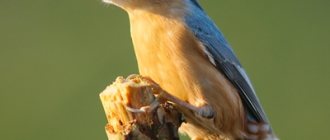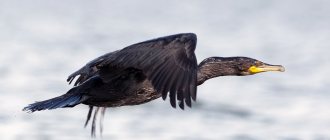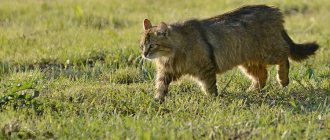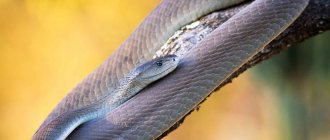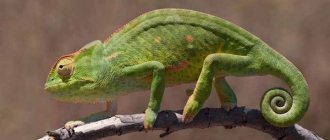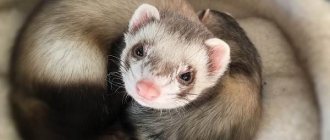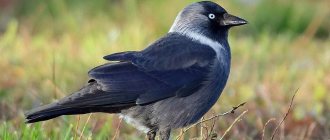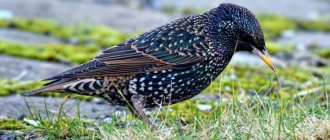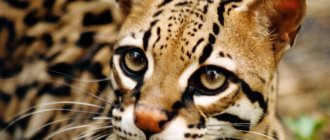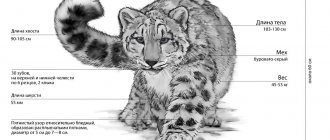| Latin name: | Spinus |
| English name: | Siskin |
| Kingdom: | Animals |
| Type: | Chordata |
| Class: | Birds |
| Squad: | Passeriformes |
| Family: | Finches |
| Genus: | Siskins |
| Body length: | 11-13 cm |
| Wing length: | 8-11 cm |
| Wingspan: | 20-23 cm |
| Weight: | 12-14 g |
- 7.1 What will the siskin need?
Description of the bird
It is not surprising that the siskin - a small funny songbird - is very often called a siskin. Yes, and the song “Chizhik-Pizhik” is also about him. It is enough to see and hear this bird once to understand what causes such an affectionate attitude towards it.
Siskins belong to the finch family, which includes many wonderful singers. The size of this bird is small: only about 12-15 g body weight, body length - 12 cm, wingspan - 20-22 cm.
— Advertising —
And, despite the fact that siskins are very well camouflaged in the treetops, when you see this bird, it is very easy to recognize it. The plumage of an adult male siskin has a bright green-yellow coloring of the head, neck and abdomen. The dark wings are also decorated with lemon spots. And males, unlike females, “wear” a black cap on their heads. Females and young males are colored brownish-brown, sometimes with yellow splashes.
Nutrition
Most of all, goldfinches love to feast on various seeds from trees; in the spring, even young buds are used. In winter, the forest does not indulge in delicacies, so siskins are content with pine and spruce cones, although they do not really like this dish.
Those who plan to keep this bird at home need to know that they are not picky and can eat almost any seed. They will willingly dine on millet, poppy seeds and even hemp seeds, although not all species of birds are allowed to feed them. In addition, you need to include in their diet various greens, ant larvae, which are part of the nightingale mixture.
Where do siskins live?
The habitat of all types of siskins is very wide. This includes Europe, Asia, North America, and South America. That is, these birds are found almost everywhere. They prefer to live in mixed forests with tall trees, where they feel safe and can hide well, as well as in high mountains.
Singing and mating season
The siskin got its name due to its peculiar singing. Birds in flocks call to each other with “siskin” squeaks, and males perform entire “parts” calling a female in the spring. The song can consist of trills, chirps, noises. The female responds to her chosen one with a quiet song. The siskin is also known as a mockingbird, imitating the singing of tits and other birds.
After a pair has formed, the birds begin building a nest, constructing it high in the treetops from branches and grass. To camouflage itself from birds of prey and animals, the outside of the nest is covered with lichen and cobwebs.
Naturalists noted that these birds place small stones in the place for future laying. German folklore says that the siskin keeps pebbles in its nest that have magical properties. You can only discover this place by accident.
Is the siskin a migratory bird or a sedentary one?
— Advertising —
Siskins are typical migratory birds. At the end of September they gather in large flocks and move south – closer to the warmth. That is why in winter you can often find siskins, for example, in the Crimea. Only in very rare cases, if in their habitat these birds find an ice-free body of water - a river, lake, stream - they can stay near it for the winter.
Main features of siskins and their care
Knowing the exact description of the siskin bird, it is easy to spot it in the forest or on forest edges, when these birds deftly fly from branch to branch, expertly clinging to the wood with their thin paws and holding on even to small branches with tenacious claws.
Led by a leader, a small flock of siskins makes smooth flights from one tree to another, such raids are associated with the search for seeds and other food, and by the beginning of autumn all the birds gather in flocks and prepare for a long flight to warmer climes, the remaining individuals settle in gardens and parks zones
What does a siskin look like?
The siskin species includes 19 varieties. What distinguishes them is, first of all, their distribution area, as well as their color and behavioral characteristics. The most famous types:
Golden siskin
— Advertising —
A North American species, also known as the American goldfinch. For the winter, these birds migrate to Mexico and change color. Lemon yellow males turn pale green.
Mexican Siskin
Inhabitant of high mountain regions of North and South America (from 900 m). These birds are very careful and difficult to spot in nature.
Pine Siskin
Found in the mountains of North America. It is colored paler than other types of siskins, in brown-yellow tones.
Fire Siskin
The most striking representative of siskins. Its head, wings and tail are jet black, and the rest of its plumage is bright carmine red. This species is slightly larger than the common siskin. Distributed in northern Venezuela, where it is a protected species.
Population and species status
The siskin belongs to the family of finches and the genus of goldfinches. The global siskin population is approximately 30 million individuals. It should be understood that there are many varieties of this species, for example, the North American species or the Golden Siskin, which is common on the American continent.
It has a brighter lemon color, and when flying to Mexico for the winter, they change their color to green. There is also a Mexican siskin, which lives mainly in the mountains, and has a similar color to the American species, only the difference will be in a larger and black “cap” on its head.
The species is very cautious, and in nature it would be very difficult for humans to detect it. The pine siskin is not as bright as its cousins, but has left yellow stripes on its flight feathers. And, probably, the most beautiful representative of siskins can be called the fiery siskin, which has fiery red and ginger shades in its plumage. It is also much larger. This species is protected, unlike other species.
By decision of the International Union for Conservation of Nature (IUCN), the siskin was awarded the status of “Least Concern,” that is, not in any risk group.
It’s quite easy to meet a siskin if you go out into nature and spend some time in the forest. Many scientists argue that a siskin, being in the wild, will still allow a person to get close enough.
This cute creature, loved by many, has been seen more than once in stories and legends, and is also a very “comfortable” pet, unpretentious and with a wonderful voice. Siskin is able to win the heart, both in captivity and in the wild.
Male and female: main differences
In siskins, sexual dimorphism is moderately expressed. As usual, male siskins show off their bright and attractive emerald-golden plumage, while females look modest and do not attract attention. This natural cunning is necessary so that the brownish-brown female is not noticeable in the nest while incubating eggs.
What do siskins eat?
Siskins feed on seeds of coniferous and deciduous trees. They feed the chicks with seeds of alder, spruce, pine, and sometimes various herbs, with a small admixture of small insects. In autumn, they feed in alder and birch forests, flying from tree to tree in noisy flocks, deftly shelling seeds with strong, sharp beaks, holding onto thin branches with tenacious paws. In spring, siskins can also eat young tree buds.
Siskins at home
Siskins are real favorites among songbird connoisseurs.
Firstly, they sing a lot and with pleasure almost 10 months a year. It’s simply impossible to get bored with such a bird at home!
Secondly, siskins very quickly get used to captivity and become truly tame birds. The owners of the siskin will always be able to safely leave the cage open - the birds will always return to their place and will not stain the room. In addition, the siskin can be taught various tricks - drinking water from the owner’s mouth, for example.
Thirdly, if all the necessary conditions are created for siskins, they can also hatch chicks in captivity.
And finally, if in the wild birds usually live for 3 years, then at home they live up to 10-12 years.
What will Chizhu need?
Siskins do not need a lot of space - the cage can be small, like for a parrot. The main thing is that it does not stand in bright sunlight or drafts.
Siskins also love water treatments, so in addition to the usual drinking bowl, they will need a special container of water for bathing.
It is better to keep birds in pairs or flocks. You can also add neighbors to the siskins. These birds will not only receive guests, but can also learn their singing skills.
In order for the birds to start nesting, they need to create a secluded corner of plywood in the cage, decorate it with spruce and pine branches, and leave material for construction - twigs, feathers, blades of grass.
In nature, siskins lay 2 clutches per year. At home, they also lay up to 6 small light-colored eggs with brown spots and stripes. The female incubates them for 12 days. And then it takes about 2 weeks for the chicks to grow up. Parents feed their babies mainly protein foods - caterpillars and insects.
Eating at home
Siskins are absolutely picky when it comes to food. Like all granivorous birds, they will need plenty of clean drinking water. You can feed siskins with any mixtures of seeds and grains (birch, poppy, flax, alder and others). In addition, greens, fruits and vegetables are added to the diet. For example, cabbage, carrots, apples.
Reproduction and nesting behavior of siskins
Siskins begin nesting very early. Since these birds are not interested in insects and other living creatures, in order to find food for themselves and begin building a nest, it is enough for siskins that the snow melts, revealing grass and seeds that have fallen to the ground.
The choice of a place to build a nest, the very efforts of constructing a living space for children, the courtship of males with females - all these are elements of one process called mating behavior.
The responsibility for choosing a nest site, protecting the nesting territory and attracting a female - all this weighs heavily on the fragile body of the male.
Interesting facts about siskins
- Siskins are real masters of camouflage; in nature, they arrange their nests in such a way that it is almost impossible to find them; that’s why they even say that siskins hide special pebbles in their nests that make them invisible;
- in addition to its own song, the siskin can easily and very reliably parody other birds if it lives next door to them;
- Siskins not only quickly get used to captivity, but also remember well the person who is looking after them, rejoice at his arrival and greet him with singing.
Why is Chizha called that?
Once you hear the cheerful, hasty song of the siskin, it immediately becomes clear where this bird got its name. In noisy flocks, siskins call to each other with trills, in which creaks, crackles, squeaks and the constant buzzing “siskin” sounds can be clearly heard.
Often in this song you can find fragments borrowed from other birds. The naturalist writer Anatoly Onegov described the siskin song perfectly: “The siskin will sing and chirp, you will listen to the little singer, and it seems that it is not a bird, but a stream gently but hastily splashing among the warm pebbles, but then a pleasant stream comes to an end, and instead of that while a beautiful song was sounding, a completely unmelodic “chizhzhzhizhi” would suddenly be heard.
